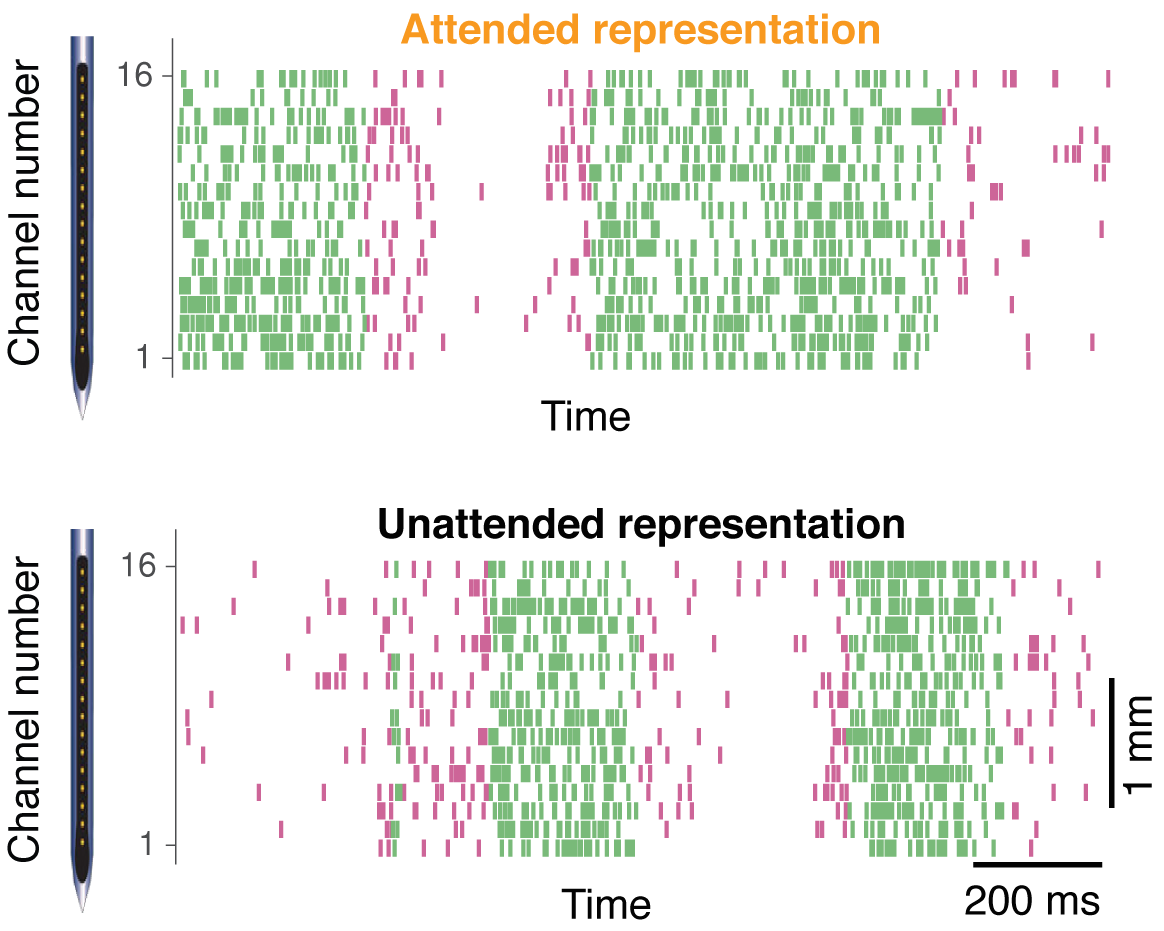Attention - Modulating cortical state locally
How do we handle the vast stream of inputs—sights, sounds, smells—continuously impinging on our senses? The brain has impressive processing capabilities, yet we cannot experience everything happening around us. At any one time, we focus on only a few elements in the environment while ignoring other sensations. If one of multiple stimuli in the environment changes, we are very likely to miss this change—unless we are cued to focus on the relevant stimulus. But when two identical stimuli equally affect sensory receptors, how does the brain focus on one stimulus and ignore the other?
We investigated what focus and ignore mean in the neurons’ language of spikes.
To study this question in the laboratory, we need to measure changes in neural spiking activity associated with cued stimuli. Typically, the difference in a subject's ability to detect changes of cued and uncued stimuli serves as a measure of perceptual improvement. Previous studies found that perceptual improvements are associated with faster and more reliable spiking in individual neurons, and with less correlated activity fluctuations across the population. Is there a single underlying mechanism that could explain all these changes?
We have discovered that neural activity in the visual cortex stochastically transitions between episodes of vigorous (On) and faint (Off) spiking.
We found that animals detect a cued stimulus’ change more reliably when it occurs during an On-episode than during an Off-episode. Thus, sensory processing is enhanced during On-episodes, when neurons are actively spiking, and suppressed during Off-episodes, when neurons go silent. These results suggest that perception is heightened when neurons are more likely to be in the On-phase. Indeed, we found that the duration of On-episodes was longer for neurons in the attentional focus. These longer On-episodes explain why perception is heightened and neuronal correlations are reduced during attention. Our results suggest that investigating such focal changes of internal cortical state is key to understanding the neural basis of attention.
